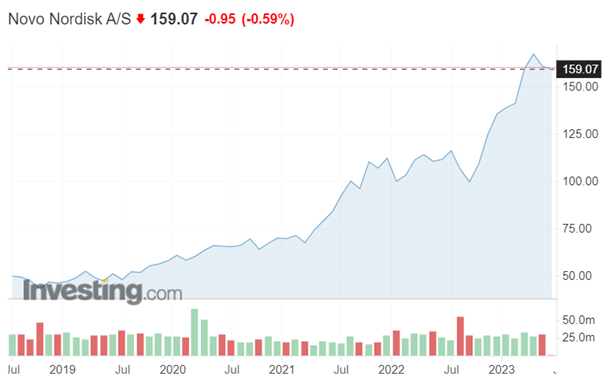Article on Investing said that Novo Nordisk announced that a late-stage trial demonstrated the efficacy of a high-dose oral version of its drug semaglutide in helping overweight or obese adults lose 15% of their body weight. This aligns with recent findings from other experimental obesity pills. The Danish company intends to seek regulatory approval in the United States and Europe for the high-dose pill later this year. However, the timing for its market launch has yet to be determined. Novo Nordisk has faced challenges in meeting the surging demand for its semaglutide products for obesity and diabetes treatment due to supply issues. The high-dose pill is part of a new class of drugs that activate hormones to regulate blood sugar, slow stomach emptying, and reduce appetite. The obesity treatment market is estimated to reach 100 billion USD by the end of the decade, driving interest from researchers and investors. Novo Nordisk aims to increase production to address the demand. The recent trial involved 667 overweight and obese adults, and the high-dose oral semaglutide resulted in an average weight loss of 15.1% after 68 weeks when combined with diet and physical activity. Gastrointestinal side effects were reported, including mild-to-moderate nausea, constipation, diarrhoea, vomiting, and altered skin sensation.
In my opinion, amazing news for companies developing such pills. Especially the fact that this sector is expected to reach 100 billion USD by the end of the decade. I was very satisfied with what I read, so I decided to check closer the movement of their stocks.
Novo Nordisk had their stocks on the market since 1981, when the price for a stock was only 1,60 USD. Since then, company managed to evolve their stock to their current price, which is also very near to the all-time high, at 159 USD per stock. * Unbelievable growth and performance. It is a clear signal that they are doing something right. Not only that, but company also had 4 stock splits in their past, meaning that I can expect a new one soon, since the price is that high. However, this can’t be taken for granted and should not be relied on. Despite being on the one of the highest points, I have decided to enter the trade as soon as the market opens. It is also important to mention that I can pick stocks from US stock exchange, or Danish stock exchange, because the company is Danish. However, I will go with the first option.

Movement of Novo Nordisk stocks in the last five years. (Source: Investing) *
* Past performance is no guarantee of future results.








